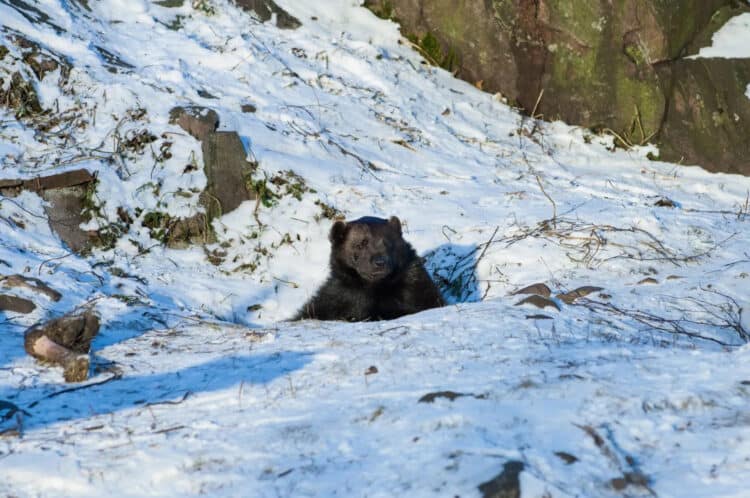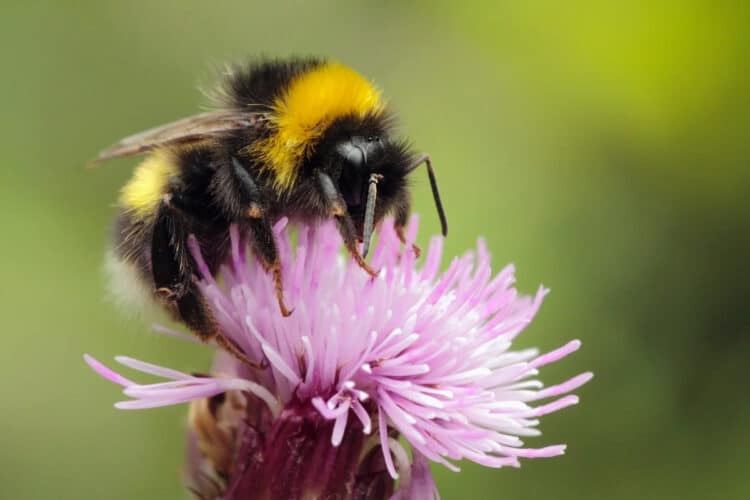While the relationship between insecticides and bees has made headlines – and controversy – for years, two recent studies have shown that another class of agricultural chemicals, little-appreciated but used in ever-increasing amounts, may also pose a threat to pollinators.
The new studies have raised concerns about fungicides: in one, foraging on fungicide-dosed flowers harmed bumblebees. Colonies were smaller, their workers tinier, their queens seemed sickly, it found.
In the other, exposures were linked to declines in wild bees living in agriculture-intensive areas. They are only two studies, and far from conclusive, but the findings fit with a growing body of research on fungicides once thought innocuous.
“It’s a group of pesticides that hasn’t been looked at too closely,” said entomologist Hannah Gaines-Day of the University of Wisconsin, whose bumblebee study appeared in the June issue of Insects. “Insecticides are meant to kill insects, so people have been really interested in how insecticides kill beneficial insects. But fungicides are not meant to kill insects, so they’ve been passed over.”
Gaines-Day and her colleagues conducted their study after being asked by local farmers whether it was safe to spray fungicides on crops while they bloomed, and while bees forage on the flowers. For insecticides, usually neonicotinoids, that’s obviously bad news: bees would feed on insect poison. But blossom-spraying is still customary with fungicides, said Gaines-Day, and early safety studies suggested the chemicals were safe. Yet those studies were limited.
They involved only honeybees, ignoring the many species of wild bees that also provide pollination, both to crops and to landscapes at large. They also focused on obvious, flagrant harm, such as bees dropping dead within a day or two, and generally ignored subtle but important effects evident over longer periods of time: whether fungicides affected bee behavior or immune systems, for example, and thus long-term health and reproduction.
Those methods came under criticism even as fungicides became steadily more popular around the world, with sales rising from $8bn in 2005 to a predicted $21bn in 2017. Fungicide pollution has been detected across the US; exposures are routine in bees, and some researchers have started to wonder whether they might contribute to declines in both honeybees and in wild, native bees.
Gaines-Day cautioned that her team’s study, which involved five bumblebee colonies kept in field enclosures where flowers were sprayed with field-realistic doses of chlorothalonil, a common fungicide, was small. The resulting diminishing in bumblebee colony size and health can’t be translated immediately to real-world colonies.
The findings also raise obvious methodological questions. Bees within the tents couldn’t feed anywhere else, but free-ranging bees can feed on non-treated flowers. That’s an important caveat, noted Gaines-Day. It also fits with patterns observed in another new study, published in the June Proceedings of the Royal Society B by researchers led by Mia Park, a pollinator ecologist at the University of North Dakota.
Park’s team found bees in New York orchards to be healthier on farms located within nature-rich areas rather than agriculture-intensive habitats. In the latter there were fewer bees, and fewer different species. Fungicides made “a significant contribution” to pesticide effects, wrote Park and colleagues, suggesting “deleterious properties of a class of pesticides that was, until recently, considered benign to bees”.
Wild bees were affected much more than honeybees and avoiding sprays during blooms didn’t seem to help. “Our findings suggest that heavy use of conventional pesticides, even some traditionally viewed as benign, can render our crops net sinks for bee populations,” wrote the researchers. In layman’s terms, crops can kill more bees than they sustain.
David Goulson, a bee biologist at the University of Sussex, said the new studies “suggest that the fungicides may be having more profound effects on bees than would have been expected from the standard lab toxicity studies”. The Park study in particular, said Goulson, “demonstrates very clearly how the cocktail of chemicals used in modern farming makes farmland an inhospitable place for bees”.
Neither of the research groups investigated precisely how fungicides could harm bees, but one possible mechanism is described in a 2013 study by US department of agriculture researchers, who found that fungicides rendered honeybees more vulnerable to parasites. Their immune systems seemed to be weakened.
Also concerning is fungicide interaction with other chemicals. Fungicides like those used in Gaines-Day’s experiment can short-circuit bees’ natural ability to detoxify some pesticides. “A quick look at a fungicide bottle might show minimal risks,” said Aimee Code, pesticide program coordinator at Xerces Society for Invertebrate Conservation, “but if mixed with some insecticides, the synergistic effects can be staggering.”
Gaines-Day and colleagues think fungicides might compromise bee microbiomes: the communities of beneficial microbes, including fungi, that are so important to the health of all animals. “Fungal diseases are a huge problem and can destroy a farmer’s crop,” said Gaines-Day, “but we don’t think, ‘What about the good microbes that can be helping a beneficial insect?’”
This article was first published by The Guardian on 18 Jun 2015. Lead Image: Until now researchers have ignored the more subtle but enduring health and reproduction effects of chemicals that harm bees. Photograph: Facundo Arrizabalaga/EPA.







Leave a Reply